ESPN's panel of recruiting experts ranked all 65 Power 5 head coaching jobs by the difficulty of recruiting at each school. Below is a look at the Big Ten rankings. For the complete 1-65 list, and more on the criteria and tiebreaking procedures for the rankings, click HERE.
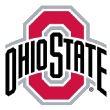
1. Ohio State Buckeyes 25 out of 25
Favorable geography/local recruiting territory: 5 -- There are always top prospects in the state, and they are usually loyal to Ohio State. Despite the population shift south that Urban Meyer has noted, OSU is in the middle of what remains a deep, football-rich area.
Recruiting/football budget: 5 -- Ohio State doesn’t necessarily have to travel to fill most of its recruiting classes, but it does recruit the Southeast heavily, and that costs money. The Buckeyes have top-notch everything, including dedicated recruiting staff and graphic designers to help target prospects.
Facilities to attract recruits: 5 -- The Buckeyes have everything they need in this realm to impress recruits.
Next-level considerations: 5 -- OSU is an NFL factory, with 55 players drafted in the past 10 years -- and a bunch more to come in 2016.
Other intangibles: 5 -- The tradition of this program resonates with recruits in a way that’s unmatched by just about every program in the country. They were the first national title winner of the College Football Playoff era and have been an annual national title contender, both of which matter. One of the strongest brands in sports.
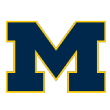
2. Michigan Wolverines: 22 out of 25
Favorable geography/local recruiting territory: 3.5 -- The state of Michigan is usually top-heavy with talent. There are some good players every year, but the state is usually not very deep. You can find good players here consistently, but it’s not Ohio and the program has to branch out.
Recruiting/football budget: 5 -- Under Jim Harbaugh, Michigan has expanded its recruiting staff and efforts. He added three main positions and a few underneath them. They also recruit nationally and spend money where it’s needed.
Facilities to attract recruits: 5 -- There’s the Big House, one of the iconic stadiums in all of sports, for starters. The Wolverines have recently updated some facilities and will continue to see upgrades in the future.
Next-level considerations: 4.5 -- Michigan has produced 34 NFL draft picks in the last 10 years -- a good number -- though it’s only had four first-round picks over that span. Still, this program isn’t going to lose recruits out of fear that they can’t get to the NFL.
Other intangibles: 4 -- Another Big Ten school with a very strong tradition and brand, even if the league and national titles have been lagging over the past decade. There are some academic considerations here -- Michigan can’t get every recruit in the country in -- but the hurdles are a notch below a Stanford or a Northwestern.

3. Penn State Nittany Lions: 20 out of 25
Favorable geography/local recruiting territory: 4 -- There is consistently talent coming out of Pennsylvania, and PSU is close enough to New Jersey and the rest of the Northeast and Mid-Atlantic that the Nittany Lions can tap into those areas as well
Recruiting/football budget: 4 -- Penn State spent the third most money in the league on recruiting ($736k) when the most recent data was available, and isn’t afraid to spend.
Facilities to attract recruits: 4 -- PSU just unveiled plans to renovate the Lasch building, which should bring everything facilities-wise up to speed here.
Next-level considerations: 4 -- The production has been down in this area lately -- the most recent first-round pick was Jared Odrick in 2010 -- but Penn State has typically not had a problem producing NFL talent.
Other intangibles: 4 -- Penn State endured one of the horrific scandals in the history of sports, but whatever the overall public perceptions are about the university’s and football program’s handling of that situation, the reality is that football recruits have not given it much consideration: PSU currently has a top-10 class. The Penn State brand remains strong on the trail.

4. Michigan State Spartans: 19 out of 25
Favorable geography/local recruiting territory: 3.5 -- See Michigan above. There are some good players locally, although the program can’t put all its eggs in that basket.
Recruiting/football budget: 4 -- The Spartans have money to spend and upped the ante when they hired Curtis Blackwell as the program’s director of college advancement and performance (a recruiting position) in 2013. They have a good-sized budget, on the top half of the Big Ten by the most recent estimates.
Facilities to attract recruits: 4 -- MSU just updated its locker rooms and a few other aspects of its facilities. They are still lacking in certain areas, but very nice.
Next-level considerations: 4 -- MSU has produced 14 NFL draft picks since 2012, including first-round picks in each of the past two seasons (Trae Waynes, Darqueze Dennard).
Other intangibles: 3.5 -- Mark Dantonio’s not the first coach to win here, and if he left tomorrow, this would be a very attractive job and a place where coaches would feel they can get players. Still, it is going to take many more years of competing for national titles for Michigan State’s football identity to measure up to Michigan’s with recruits. MSU is one of the best-run athletic departments in sports but staying on equal footing for talent is going to remain very, very hard work.
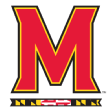
5. Maryland Terrapins: 17 out of 25
Favorable geography/local recruiting territory: 4 -- Located in the DMV (DC/Maryland/Virginia), there is always a pool of talent in the surrounding areas. Maryland is able to tap into all the top East Coast talent, and there is generally a lot of talent to choose from. The only negative is there is a lot of competition for those prospects.
Recruiting/football budget: 3 -- This number was on the low end of the Big Ten when Maryland joined the league, but is rising. The Terps just spent money on all new facilities, and Under Armour’s backing (CEO Kevin Plank is an alumnus) is a big-time financial plus.
Facilities to attract recruits: 4 -- As mentioned, Maryland just announced new plans for facility upgrades and is spending a lot of money to integrate academics and athletics -- the idea being that will become easier for players to balance both. That’s an important consideration for a lot of recruits.
Next-level considerations: 2 -- Only four players drafted since 2011, and only one first-round pick (Darrius Heyward-Bey) in the past decade.
Other intangibles: 4 -- Under Armour’s role has made Maryland a more identifiable brand among recruits. What the Terps will continue to fight in competing with Penn State and others for recruits is a smaller fan base for football, and a perception that football doesn’t matter as much to fans.
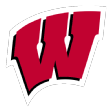
6. Wisconsin Badgers: 16 out of 25
Favorable geography/local recruiting territory: 3 -- There usually isn’t a ton of talent in Wisconsin and the surrounding areas. The Badgers make it work, though, and usually find good linemen in the area, at a minimum.
Recruiting/football budget: 2 -- One of the knocks on Wisconsin is that the school is stingy when it comes to spending -- the most recent data says the Badgers were last in the Big Ten in recruiting budget, and that reality has helped drive away multiple head coaches.
Facilities to attract recruits: 4 -- Wisconsin spent $86 million in facilities upgrades in 2013 and is committed to keeping up in this regard. Camp Randall Stadium was built in 1917 and might not have all the bells and whistles of some modern stadiums, but it’s hard to imagine a recruit being turned off by the Badgers’ facilities.
Next-level considerations: 4 -- The Badgers have had 21 players drafted since 2011, including five first-round picks over that span. Russell Wilson’s high profile has helped too.
Other intangibles: 3 -- There’s a good tradition here and Wisconsin has made Rose Bowl appearances on the regular, but the culture of Madison isn’t for everyone and Wisconsin is going to be a much tougher sell for many recruits than is Columbus or Ann Arbor or East Lansing.

7. Nebraska Cornhuskers: 16 out of 25
Favorable geography/local recruiting territory: 2 -- This is not a strong area for football talent, especially compared to Nebraska’s top competitors in the Big Ten, and the Cornhuskers have traditionally had to recruit nationally to get players. But the program has inked just one ESPN300 prospect since 2010 -- a problem when you consider yourself a national program.
Recruiting/football budget: 4 -- No one in the Big Ten has to travel more than Nebraska to get players, and to its credit, he program accounts for that reality by spending money. The Cornhuskers’ recruiters travel, and there are dedicated recruiting positions as well.
Facilities to attract recruits: 4 -- Nebraska has outstanding facilities.
Next-level considerations: 3 -- The Cornhuskers have had 19 NFL draft picks in the last five years, but have had just one first-round pick (Prince Amukamara in 2011) over that span.
Other intangibles: 3 -- This program is steeped in tradition and can point to national titles in its history, but recruits are aware that none of that tradition has come during the program’s Big Ten era. Many of the nation’s top current recruits were not born when Tom Osborne stepped down after the 1997 season -- the program’s last period of sustained national relevance. This is a strong brand, but it’s not what it was.

8. Iowa Hawkeyes: 16 out of 25
Favorable geography/local recruiting territory: 2 -- There is rarely any top talent in the state, and Iowa is a decent distance away from other talent pools. Kirk Ferentz has had to redshirt and be better at developing the players he brings in because of a weaker talent pool.
Recruiting/football budget: 3 -- Iowa doesn’t have a huge recruiting staff and its spending on recruiting is in the bottom half of the league by the most recent estimates.
Facilities to attract recruits: 4 -- Iowa just spent $55 million on a brand new football performance center that has all the bells and whistles of the top programs in the country, with everything football-related in the same building. That’s a major drawing card.
Next-level considerations: 4 -- The Hawkeyes have 33 players currently in the NFL, and have had four first-round picks since 2010. You can get to the next level from here, especially if you’re an offensive lineman.
Other intangibles: 3 -- There’s a good tradition and a passionate fan base here, but the reality is that Iowa needed a number of stars to align this season to find itself in the national title conversation. It’s not a place where you’re likely to be a perennial champion, and recruits understand this.
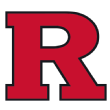
9. Rutgers Scarlet Knights: 16 out of 25
Favorable geography/local recruiting territory: 4 -- There are always top prospects in New Jersey and the surrounding areas. It’s a deep state that cares about football, but Rutgers has traditionally not been able to keep the local talent home. There’s a lot of competition for players in this area.
Recruiting/football budget: 3 -- Rutgers’ recruiting budget is in the bottom half of the league thanks to the wealth of local talent -- though if the Scarlet Knights have trouble attracting local players, is it enough?
Facilities to attract recruits: 3 -- Rutgers announced a state-of-the art facilities upgrade in June, which promises to put the football program’s facilities in line with the rest of the Big Ten. It’s going to take some time for those upgrades to have an impact, however.
Next-level considerations: 3 -- Rutgers had a whopping seven players drafted in 2013 (the last vestiges of the Greg Schiano era of recruiting) but have only two selected since, and no first- or second-round picks since 2010.
Other intangibles: 3 -- The Scarlet Knights have attempted for years to establish themselves as an entity that matters in the New York metro area, with varying degrees of success. Mismanagement and scandals have meant the brand is sometimes more an albatross than a benefit on the recruiting trail, but Schiano showed that success at landing players is possible.

10. Illinois Fighting Illini: 15 out of 25
Favorable geography/local recruiting territory: 3 -- The state of Illinois has good prospects every year, but isn’t consistent on the top end. There is a fluctuation every year in the number of ESPN 300 prospects, but it is among the deeper states in the Midwest.
Recruiting/football budget: 4 -- Illinois has a good sized recruiting staff and recruits across the country, so their budget is usually pretty big. The Illini were second in the Big Ten behind only Nebraska in recruiting expenditures, according to the most recent data.
Facilities to attract recruits: 3 -- Facilities are not great and in need an update. Former AD Mike Thomas talked about upgrades to Memorial Stadium and other football facilities, but nothing has been formalized.
Next-level considerations: 3 -- There are a surprising number of NFL players from Illinois (19 draft picks since 2009), but it’s telling that the Illini have been shut out of the past two drafts.
Other intangibles: 2 -- Illinois last won a Big Ten title in 2001 and has made one Rose Bowl appearance since 1984, so selling tradition here is not really bankable. The Illini are also on the high-end of Big Ten academics -- former coach Tim Beckman had to beg the school to let him take jucos -- and that’s a hurdle the school regularly encounters on the trail.
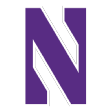
11. Northwestern Wildcats: 15 out of 25
Favorable geography/local recruiting territory: 3 -- Similar to Illinois in terms of region. There’s decent talent in the area.
Recruiting/football budget: 3 -- Northwestern is a private school, so numbers aren’t really known. But the Wildcats recruit Texas heavily, for one, and that costs money. It is believed that the school’s recruiting expenditures are somewhere in the middle of the Big Ten road.
Facilities to attract recruits: 4 -- The new Lakefront Athletics and Recreation Complex, which is set to be completed next December, could be a game-changer. Aging Ryan Field is not one of the league’s top facilities, however.
Next-level considerations: 2 -- Northwestern hasn’t had a player selected in the first three rounds of the NFL draft since Luis Castillo in 2005. This is not the place to go if your No. 1 goal is reaching the next level, though like Stanford or Duke, for those recruits who are looking at a “next level” in something other than football, Northwestern is extremely attractive.
Other intangibles: 3 -- Like Stanford, Northwestern leverages its high-level academics as much as it can, though anyone who has ever coached at the school will tell you recruiting is a unique challenge. The Chicago market is also a nice enticement for some recruits.
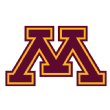
12. Minnesota Golden Gophers: 15 out of 25
Favorable geography/local recruiting territory: 2 -- Not a great recruiting area, but there have been some good players to come out of the area, especially linemen. Tough area to recruit.
Recruiting/football budget: 4 -- Minnesota needs to travel to recruit players since there isn’t a ton of in-state talent. That means money needs to be spent, and the school was in the top half of the league in recruiting expenditures the last time data was collected. The Gophers also have a good sized recruiting staff.
Facilities to attract recruits: 4 -- Minnesota has a sparkling new stadium, TCF Stadium, and just announced that an upgrade to other football facilities was in the works.
Next-level considerations: 2 -- Six Gophers were selected in the last two NFL drafts, but this has traditionally not been a place that has churned out pros. Laurence Maroney is the school’s only first-rounder since 2001.
Other intangibles: 3 -- Minnesota has been a tough out in recent years, but hasn’t won even a share of the Big Ten title since 1967. You’re not really selling tradition here. But the big market of Minneapolis is attractive to some prospects.

13. Indiana Hoosiers: 13 out of 25
Favorable geography/local recruiting territory: 2 -- The state of Indiana is top-heavy, usually with a handful of very good prospects but not very deep beyond that. Every year there are a few really good players from the state -- but those players rarely go to Indiana.
Recruiting/football budget: 3 -- Indiana doesn’t have a ton of resources or budget. Bottom half of the Big Ten.
Facilities to attract recruits: 3 -- The Hoosiers’ facilities are not great, and in need of an update.
Next-level considerations: 2 -- Not a lot of NFL prospects come from Indiana, which hasn’t had a first-round pick since Thomas Lewis in 1994.
Other intangibles: 3 -- It’s not a helpless situation in terms of getting players, but this is a basketball school in a basketball-crazed state, and the last league title and Rose Bowl was in 1967.

14. Purdue Boilermakers: 12 out of 25
Favorable geography/local recruiting territory: 2 -- Same as Indiana. The truly top-end players are difficult to keep in the state.
Recruiting/football budget: 3 -- Purdue is middle of the Big Ten pack in recruiting budget, and could probably stand to spend more given the program’s talent erosion.
Facilities to attract recruits: 4 -- Announced $60 million in facility upgrades back in October, which are much-needed but won’t be completed until 2017.
Next-level considerations: 1 -- Kawann Short is the only Purdue player since 2011 to be picked before the fifth round. Not a lot of NFL talent here. Current recruits don’t remember when Drew Brees played here, and few even remember Kyle Orton at this point.
Other intangibles: 2 -- With a 32-66 record since 2008, including 6-30 since 2013 (pretty much unheard of for a Power 5 school in this era), the Purdue football brand is in a dire place. If there is a Big Ten school in need of a magic bullet, it’s this one.
